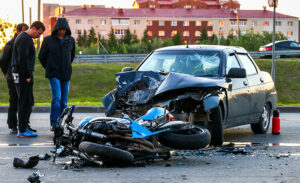
Name: Ethan Dang
From: Houston, Texas
Votes: 0
Essay on Driving Safety
Driving is a privilege that comes with immense responsibility, yet not everyone takes the time to appreciate its seriousness. Every year, thousands of people lose their lives in traffic accidents, many of which could have been prevented with proper education and safer driving practices. Reflecting on my own experiences and observations, it is clear that driver education is essential to reducing fatalities, and there are specific steps we can take to make roads safer for everyone.
Driver education plays a role in reducing the number of deaths caused by traffic accidents. It equips individuals with the knowledge and skills to navigate complex road systems, handle hazardous conditions, and make decisions behind the wheel. Beyond technical skills like parking and merging, driver education also teaches the importance of defensive driving—being aware of and prepared for other drivers’ mistakes.Proper education fosters a culture of responsibility, emphasizing the risks of distracted driving, speeding, and driving under the influence. Without this foundation, drivers are more likely to develop dangerous habits that put themselves and others at risk. For young or new drivers, especially, a comprehensive driver education program can be the difference between life and death.
To minimize traffic death, society needs to focus on several key areas. First, enforcing stricter laws on distracted driving and impaired driving can deter risky behavior. Campaigns like “Click It or Ticket” or those promoting the dangers of texting while driving have shown that awareness combined with consequences can lead to better habits.Improving infrastructure is another step. Well-lit roads, clear signage, and proper maintenance reduce the likelihood of accidents. Expanding access to public transportation can also decrease the number of vehicles on the road, further reducing risks.Education needs to continue beyond obtaining a driver’s license. Programs for defensive driving and refresher courses for older drivers can help reinforce good habits and address changes in driving laws or technology.
One of the most vivid memories of my childhood involves a car accident that changed how I view driving forever. When I was six years old, my family was driving on the highway during a rainstorm. The roads were slick, visibility was poor, and everyone was trying to be cautious—except for one driver. While we were maintaining a safe distance from other cars, this person was on their phone, barely paying attention.Before we knew it, their car veered into our lane, hitting my parents’ car. The impact caused our car to spin rapidly, skidding across the wet pavement before slamming into a side barrier. I remember the terror of that moment vividly—how everything felt out of control and the sounds of screeching tires and crunching metal filled the air.What I also remember, though, is the kindness of a nurse who happened to be driving by. She stopped her car and came over to check on us, making sure everyone was okay and offering words of comfort in a moment of chaos. Thankfully, no one in my family was seriously injured, but the accident left us shaken. It also left a practical impact: my parents had to buy a new car, which added financial strain to an already stressful experience.This event was a stark reminder of how dangerous distracted driving can be. That driver’s momentary lapse in attention not only endangered their own life but also the lives of my family.
After reflecting on that experience and the lessons I’ve learned, I’m committed to being a safer driver. One of the most important steps I can take is staying focused. This means keeping my phone out of reach while driving, setting up navigation and music before I start the car, and avoiding other distractions like eating or multitasking.Practicing defensive driving is another critical step. By maintaining a safe following distance, being aware of my surroundings, and anticipating potential hazards, I can better respond to unexpected situations. Additionally, I make it a point to stay calm and patient, especially when dealing with aggressive or reckless drivers.Beyond my own habits, I can help others become safer drivers by sharing these lessons and encouraging accountability. Whether it’s reminding friends not to text and drive or helping younger drivers understand the importance of focus, we all have a role to play in promoting safety on the road.
In conclusion, Driving safely is about more than just protecting ourselves—it’s about ensuring the safety of everyone on the road. By emphasizing driver education, enforcing strict laws, and practicing defensive driving, we can significantly reduce the number of traffic-related deaths. My own experience with a car accident taught me just how devastating a single moment of distraction can be, and it has motivated me to be more mindful and responsible behind the wheel.The ultimate goal is to create a culture where safe driving is the norm, not the exception. Through education, awareness, and personal commitment, we can all contribute to making the roads a safer place for everyone.